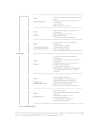eHealth program to empower patients in returning to normal activities and work after gynecological surgery: intervention mapping as a useful method for development
- PMID: 23086834
- PMCID: PMC3510728
- DOI: 10.2196/jmir.1915
eHealth program to empower patients in returning to normal activities and work after gynecological surgery: intervention mapping as a useful method for development
Abstract
Background: Full recovery after gynecological surgery takes much longer than expected regardless of surgical technique or the level of invasiveness. After discharge, detailed convalescence recommendations are not provided to patients typically, and postoperative care is fragmented, poorly coordinated, and given only on demand. For patients, this contributes to irrational beliefs and avoidance of resumption of activities and can result in a prolonged sick leave.
Objective: To develop an eHealth intervention that empowers gynecological patients during the perioperative period to obtain timely return to work (RTW) and prevent work disability.
Methods: The intervention mapping (IM) protocol was used to develop the eHealth intervention. A literature search about behavioral and environmental conditions of prolonged sick leave and delayed RTW in patients was performed. Patients' needs, attitudes, and beliefs regarding postoperative recovery and resumption of work were identified through focus group discussions. Additionally, a literature search was performed to obtain determinants, methods, and strategies for the development of a suitable interactive eHealth intervention to empower patients to return to normal activities after gynecological surgery, including work. Finally, the eHealth intervention was evaluated by focus group participants, medical doctors, and eHealth specialists through questionnaires.
Results: Twenty-one patients participated in the focus group discussions. Sufficient, uniform, and tailored information regarding surgical procedures, complications, and resumption of activities and work were considered most essential. Knowing who to contact in case of mental or physical complaints, and counseling and tools for work reintegration were also considered important. Finally, opportunities to exchange experiences with other patients were a major issue. Considering the determinants of the Attitude-Social influence-self-Efficacy (ASE) model, various strategies based on a combination of theory and evidence were used, resulting in an eHealth intervention with different interactive functionalities including tailored convalescence recommendations and a video to communicate the most common pitfalls during the perioperative period to patients and employers. Fifteen patients in the focus groups, 11 physicians, and 3 eHealth specialists suggested points for improvement to optimize the usability of the eHealth intervention and judged it an approachable, appropriate, and attractive eHealth intervention to empower gynecological patients.
Conclusions: The IM protocol was a useful method to develop an eHealth intervention based on both theory and evidence. All patients and stakeholders judged the eHealth intervention to be a promising tool to empower gynecological patients during the perioperative period and to help them to return to normal activities and work.
Conflict of interest statement
None declared.
Similar articles
-
Electronic Health Program to Empower Patients in Returning to Normal Activities After General Surgical and Gynecological Procedures: Intervention Mapping as a Useful Method for Further Development.J Med Internet Res. 2019 Feb 6;21(2):e9938. doi: 10.2196/jmir.9938. J Med Internet Res. 2019. PMID: 30724740 Free PMC article.
-
Intervention mapping for development of a participatory return-to-work intervention for temporary agency workers and unemployed workers sick-listed due to musculoskeletal disorders.BMC Public Health. 2009 Jul 2;9:216. doi: 10.1186/1471-2458-9-216. BMC Public Health. 2009. PMID: 19573229 Free PMC article.
-
The cost effectiveness of a tailored, web-based care program to enhance postoperative recovery in gynecologic patients in comparison with usual care: protocol of a stepped wedge cluster randomized controlled trial.JMIR Res Protoc. 2014 Jun 18;3(2):e30. doi: 10.2196/resprot.3236. JMIR Res Protoc. 2014. PMID: 24943277 Free PMC article.
-
Interventions Developed with the Intervention Mapping Protocol in Work Disability Prevention: A Systematic Review of the Literature.J Occup Rehabil. 2019 Mar;29(1):11-24. doi: 10.1007/s10926-018-9776-8. J Occup Rehabil. 2019. PMID: 29948471
-
Return to work following surgery for lumbar radiculopathy: a systematic review.Spine J. 2018 Sep;18(9):1694-1714. doi: 10.1016/j.spinee.2018.05.030. Epub 2018 May 22. Spine J. 2018. PMID: 29800705
Cited by
-
Effectiveness of an internet-based perioperative care programme to enhance postoperative recovery in gynaecological patients: cluster controlled trial with randomised stepped-wedge implementation.BMJ Open. 2018 Jan 30;8(1):e017781. doi: 10.1136/bmjopen-2017-017781. BMJ Open. 2018. PMID: 29382673 Free PMC article. Clinical Trial.
-
Planning theory- and evidence-based behavior change interventions: a conceptual review of the intervention mapping protocol.Psicol Reflex Crit. 2017 Oct 18;30(1):19. doi: 10.1186/s41155-017-0072-x. Psicol Reflex Crit. 2017. PMID: 32026109 Free PMC article. Review.
-
How a Fully Automated eHealth Program Simulates Three Therapeutic Processes: A Case Study.J Med Internet Res. 2016 Jun 28;18(6):e176. doi: 10.2196/jmir.5415. J Med Internet Res. 2016. PMID: 27354373 Free PMC article.
-
Factors Influencing Postoperative Recovery and Time Off Work of Patients with Benign Indications for Surgery - Results of a Prospective Study.Geburtshilfe Frauenheilkd. 2020 Jul;80(7):723-732. doi: 10.1055/a-1157-8996. Epub 2020 Jul 14. Geburtshilfe Frauenheilkd. 2020. PMID: 32675834 Free PMC article.
-
Engaging stakeholders in the co-development of programs or interventions using Intervention Mapping: A scoping review.PLoS One. 2018 Dec 26;13(12):e0209826. doi: 10.1371/journal.pone.0209826. eCollection 2018. PLoS One. 2018. PMID: 30586425 Free PMC article.
References
-
- Clayton M, Verow P. A retrospective study of return to work following surgery. Occup Med (Lond) 2007 Oct;57(7):525–31. doi: 10.1093/occmed/kqm082. http://occmed.oxfordjournals.org/cgi/pmidlookup?view=long&pmid=1790626757/7/525 - DOI - PubMed
-
- Johansen P, Al-Khafagi SK, Thøstesen LM, Lauszus FF, Rasmussen KL. [Analysis of need for sick leave after hysterectomy] Ugeskr Laeger. 2008 Apr 21;170(17):1465–8.VP05070064 - PubMed
-
- Department of Health . Choosing Health: Making Healthy Choices Easier. London: National Health Service (NHS); 2004.
Publication types
MeSH terms
LinkOut - more resources
Full Text Sources
Medical


